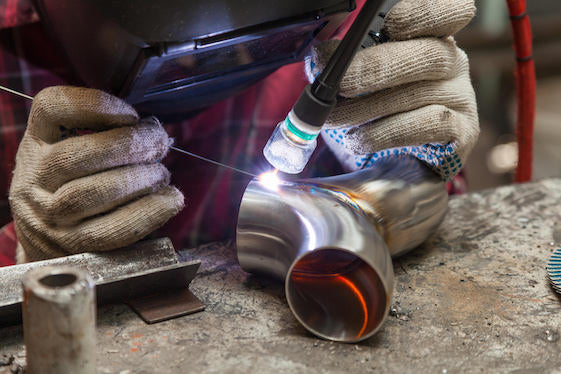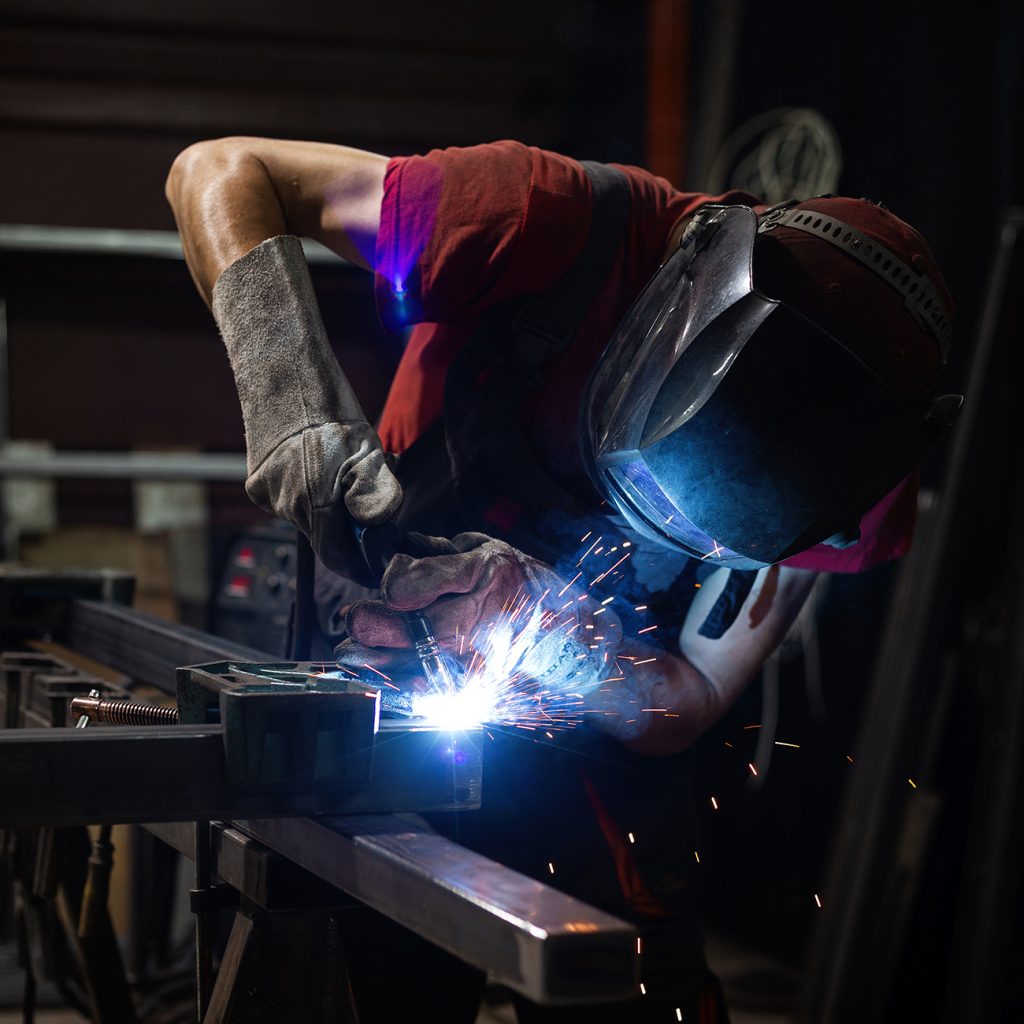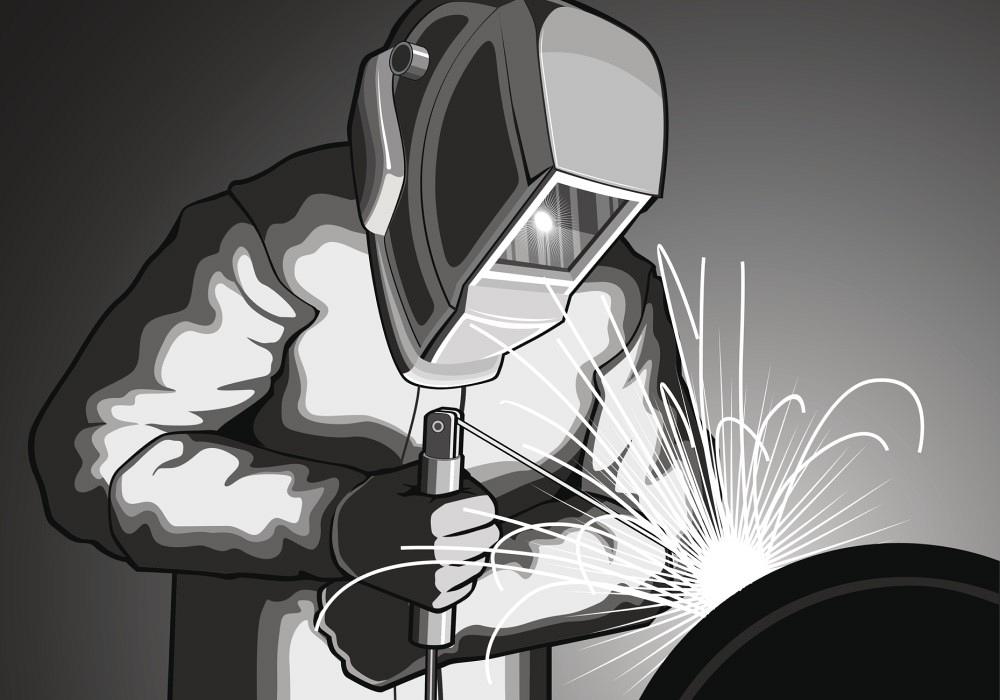Usual Welding Repair Work Issues and How to Address Them Properly
Welding repairs usually experience an array of problems that can jeopardize the stability of the final product. Common troubles include inadequate infiltration, porosity, and imbalance, to name a few. Each problem presents distinct challenges that need certain methods for resolution. Comprehending these issues is necessary for welders intending to boost their abilities and end results. This discussion will certainly check out these typical welding repair issues and effective approaches to resolve them.
Inadequate Infiltration
Insufficient penetration takes place when the weld steel stops working to completely fuse with the base product, leading to weak joints and possible structural failures. This concern usually stems from insufficient heat input, inaccurate electrode angle, or incorrect welding rate. Welders might run into inadequate infiltration as a result of a miscalculation of the required parameters for a certain product density or kind. Furthermore, contamination on the base product's surface area can impede efficient bonding, aggravating the trouble. To address insufficient infiltration, welders should ensure appropriate setups on their devices and preserve a clean job surface area. Normal assessment of welds is advised to identify any type of deficiencies early, enabling timely corrections and the prevention of compromised architectural stability in welded assemblies.
Porosity
Porosity is a common flaw in welded joints that materializes as little gas bubbles trapped within the weld metal. This defect can endanger the stability of the weld, resulting in lowered toughness and possible failing under anxiety. Montana Mobile Welding and Repair Welding. Porosity commonly emerges from contamination, wetness, or inappropriate welding methods, which allow gases to get away into the liquified weld pool. To resolve porosity, welders need to ensure correct surface area preparation, keep a tidy workplace, and make use of ideal welding criteria. In addition, picking the ideal filler product and protecting gas can minimize gas entrapment. Regular assessment and screening of welds can assist identify porosity early, ensuring prompt rehabilitative activities are taken, thus preserving the high quality and dependability of the welded framework
Imbalance
Misalignment in welding can emerge from various elements, including incorrect setup and thermal development. Understanding the root triggers is vital for reliable resolution. A number of correction methods are available to realign parts and assure structural stability.
Reasons for Misalignment
Welding imbalance usually comes from a range of underlying issues that can compromise structural stability. One main reason is inappropriate fit-up of components before welding, which can bring about gaps and unequal surface areas. Variations in thermal development throughout the welding procedure can also result in distortion, especially if the products being signed up with have different coefficients of growth. In addition, inadequate fixturing and clamping may fail to hold components firmly in position, resulting in activity during welding. Poorly conserved devices, consisting of welding equipments and tools, may present variances in the weld grain, more adding to imbalance. Driver mistake, stemming from not enough training or experience, can likewise play a significant duty in producing misaligned welds.

Correction Strategies Readily Available
Dealing with imbalance properly needs a combination of restorative techniques tailored to the certain concerns handy. One typical approach is the usage of fixtures or jigs to hold components in the appropriate position during welding, ensuring constant placement. Furthermore, preheating the products can aid reduce distortion and boost fit-up. For considerable misalignment, mechanical realignment strategies, such as making use of hydraulic jacks or clamps, can be utilized to deal with the placement prior to welding. Post-weld warmth treatment may likewise be necessary to relieve stress and anxieties triggered by misalignment. Ultimately, careful examination and adjustment during the setup stage can avoid misalignment issues from coming to be substantial issues, advertising a smoother welding procedure and improving total architectural stability.
Distortion
Distortion is a common difficulty in welding that can occur from different variables, consisting of irregular heating and air conditioning. Understanding the reasons for distortion is vital for applying reliable avoidance techniques. Resolving this issue not just enhances structural integrity yet additionally improves the general quality of the weld.
Reasons for Distortion
When subjected to the extreme warm of welding, products commonly undertake adjustments that can result in distortion. This sensation primarily arises from thermal growth and contraction throughout the welding process. As the weld area warms up, the product expands; upon air conditioning, it gets, which can develop interior tensions. In addition, unequal heating throughout a workpiece can worsen these anxieties, leading to warping or bending. The type of product also plays a considerable role; steels with differing thermal conductivity and coefficients of growth may respond differently, bring about unforeseeable distortions. Inadequate joint style and poor fixturing can add to imbalance during welding, increasing the chance of distortion. Understanding these reasons is necessary for reliable welding repair work and prevention methods.
Avoidance Techniques
Reliable prevention strategies for distortion during welding focus on managing warmth input and ensuring proper joint style. Keeping a consistent warm input helps to reduce thermal expansion and tightening, which can result in distortion. Making use of methods such as preheating the workpiece can additionally reduce the temperature slope, promoting uniform heating. Furthermore, selecting ideal joint designs, such as T-joints or lap joints, can improve security and reduce stress concentrations. Executing correct fixturing to protect the workpieces in position even more aids in maintaining positioning throughout the welding procedure. Lastly, staggered welding series can distribute warmth more evenly, preventing local distortion. By using these techniques, welders can substantially lower the chance of distortion and improve the general quality of their welds.
Cracking
Breaking is a common concern experienced in welding repairs, often resulting from various variables such as incorrect cooling prices, product selection, or inadequate joint preparation. The event of splits can greatly endanger the honesty of the weld, causing possible failings during operation. To resolve this concern, welders have to initially evaluate the source, guaranteeing that materials are compatible and suitably selected for the specific application. In addition, controlling the air conditioning rate during the welding process is important; quick cooling can induce stress and anxiety and bring about fracturing. Appropriate joint style and prep work additionally add to reducing the risk. Executing these approaches can boost weld quality and durability, eventually reducing the possibility of fracturing in finished weldments.

Incomplete Blend
A substantial concern in welding repair services is insufficient blend, which occurs when the weld metal does not appropriately bond with the base product or previous weld passes - Montana Mobile Welding and Repair Welding. This problem can cause weak points in the joint, possibly jeopardizing the stability of the welded structure. Factors adding to incomplete fusion consist of not enough heat input, improper welding technique, and contamination of the surface areas being signed up with. To resolve this problem efficiently, welders need to ensure correct pre-weld cleaning and surface area prep work, as well as adjust their welding specifications to additional resources achieve ample penetration and combination. Routine evaluation kweld throughout the welding procedure can additionally help identify insufficient fusion early, permitting prompt rehabilitative actions to boost the general quality of the weld
Overheating
While welding repairs can boost structural stability, overheating offers a substantial challenge that can cause material destruction. Excessive heat during welding can change the mechanical homes of steels, causing lowered stamina, raised brittleness, and bending. This phenomenon is especially important in high-stress applications where structural reliability is vital. Identifying getting too hot can include aesthetic evaluations for discoloration or distortion, in addition to keeping an eye on temperature level throughout the welding process. To alleviate the threats connected with getting too hot, welders ought to employ proper techniques, such as managing warmth input, readjusting travel rate, and making use of suitable filler materials. Furthermore, executing pre- and post-weld warmth treatments can assist bring back product homes and enhance the overall high quality of the repair work, ensuring lasting efficiency and safety and security.
Regularly Asked Questions
What Are the Common Signs of a Welding Problem?

Exactly How Can I Test My Welds for High quality?
To evaluate welds for high quality, one can make use of visual examinations, ultrasonic screening, and radiographic techniques. Each strategy assures architectural integrity, determines defects, and validates adherence to defined criteria, ultimately improving the dependability of the welded joints.
What Safety and security Precautions Should I Take While Welding?
When welding, one need to prioritize safety and security by putting on ideal individual protective devices, guaranteeing appropriate air flow, safeguarding combustible materials away, keeping a clean work space, and understanding environments to stop crashes and injuries.
Can I Repair a Weld Without Redesigning the Entire Joint?
Repairing a weld without redesigning the entire joint is feasible, depending upon the damage (Montana Mobile Welding and Repair Belgrade Welding). Methods such as grinding, adding filler product, or making use of a welding process can properly deal with certain problems while preserving the bordering structure
What Devices Are Crucial for Reliable Welding Services?
Vital tools for efficient welding repair work consist of a welding maker, cord brush, mill, safety gear, clamps, and filler materials. Each device plays a crucial duty in ensuring top quality and security during the repair process. Porosity usually arises from contamination, moisture, or improper welding strategies, which enable gases to leave right into the liquified weld pool. Inadequately kept tools, including welding makers and devices, might present inconsistencies in the weld grain, further contributing to imbalance. When subjected to the extreme heat of welding, products often go through modifications that can lead to distortion. Splitting look at here now is a common concern come across in welding repairs, often resulting from numerous factors such as incorrect air conditioning rates, product choice, or insufficient joint preparation. A significant problem in welding repair work is insufficient blend, which takes place when the weld metal does not adequately bond with the base material or previous weld passes.